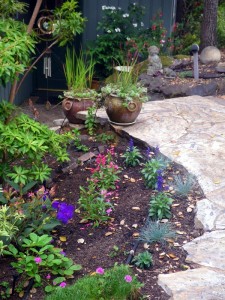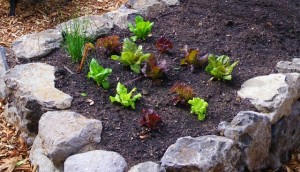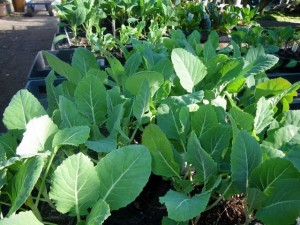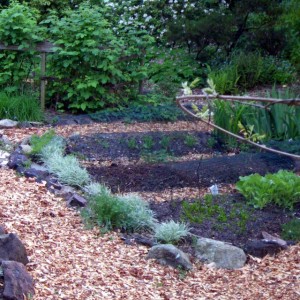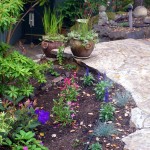
by Avis Licht –
Early Spring is the time for gardeners to get ready for their early vegetable garden.Here are a few things to think about to help you get started.
SITE
1. Pick a place near the house for your vegetable garden so that you will see it everyday. Out of site is out mind for most people. Visit your garden for at least 10 minutes a day and you will keep up with the maintenance and see how plants are doing. You’ll discover if there are any problems before it’s too late.
2. Pick a sunny site that gets at least 6 hours of sun. Most vegetables need this amount to grow well.
3. Make sure there’s water near by for irrigating.
SIZE
1. Keep it Small and Simple, as the saying goes. First time gardeners should start small and be successful. Graduate to a larger plot next year. A couple of beds, 3 ft x 6 ft, will give plenty of delicious vegetables.
2. Consider growing your herbs in pots near the kitchen where they are easy to harvest.
SOIL
1.Whatever kind of soil you have, be sure to loosen it and add compost. By aerating your soil and adding humus you will increase oxygen, nutrients and drainage, which will help your plants grow. You can loosen your soil by digging, rototilling or bringing in topsoil and adding it to a raised bed.
2. Check your soil for drainage. If you see standing water on the surface, or if you dig a hole and there is water in the bottom, you need to make some adjustments. Vegetables don’t like to grow in standing water. There are several ways to improve drainage. Dig into the hard soil with a digging fork and loosen it. Raised beds provide better drainage. You can also dig a small ditch and direct it away from the growing area. This will help move water away and improve your soil.
3. Create paths for walking in the garden. Every time you walk on the soil you compact it. This prevents air and water from entering. Just by using paths and not walking on the beds you will increase the health of your soil and your plants.
CHOOSE YOUR VEGETABLES WISELY
1. Choose your favorite foods to grow. Zucchinis are easy to grow, but if you don’t like them, don’t grow them! Peas, carrots, beans and tomatoes taste better when harvested ripe and fresh. They are easy to grow and harvest.
2. Choose what grows best in your climate and your site. If you’re in the cool Northwest U.S. you might want to pass up on the hot peppers and melons. Cooler climates are good for broccoli, cabbage, lettuce, spinach, chard and kale. If you’re in a hot climate go for the peppers, melons, squash and eggplant.
3. Look for micro climates in your garden to give you more opportunities to grow plants that you might otherwise leave out. A micro climate will be a place that is sunnier ( on the south side of the house), cooler (on the north side), calmer (on the lea side of a fence or windbreak), shadier (under a tree) and so on. Check out your garden for mini climates.
RESOURCES
1.Your local nurseries will be carrying plants appropriate for your climate. Ask them questions.
2. For the Western United States, consult Sunset Western Gardening Book. It is amazing in it’s information for so many regions in the West.
3. Seed Catalogs and Online companies. Check out my list in the resource page.

 Follow
Follow

